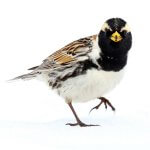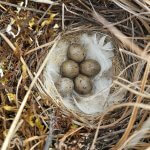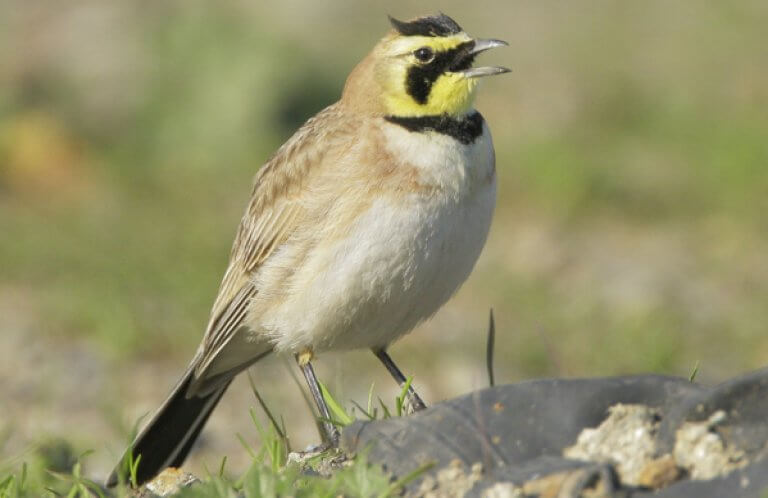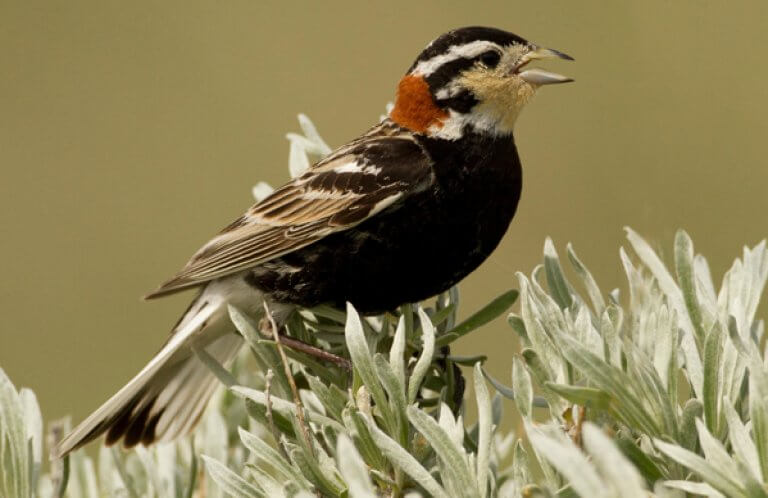About the Lapland Longspur
The Lapland Longspur is one of four species of longspur in North America (the other three are the Thick-billed, Chestnut-collared, and Smith's Longspurs). However, the Lapland Longspur is the only member of its genus distributed across both the New and Old Worlds. It's one of the most abundant breeding songbirds in the Americas, and is also a common breeder in Eurasia, where it's known as Lapland Bunting.
The male Lapland Longspur is eye-catching in breeding plumage, with a head and upper body of rich chestnut and black, bisected by a bold white stripe. However, most birders only see this species during the winter, when the male, like the female and young birds, has streaked, sparrow-like plumage, retaining only the outline of the summer's bold facial pattern.
Hiding in Plain Sight
Although a Lapland Longspur in winter plumage may appear to be a sparrow at first glance, there are a few important field marks that help clinch its ID.
The Lapland Longspur has shorter legs than a sparrow and moves close to the ground in a mouse-like manner, seemingly invisible until it flies up, revealing telltale white outer tail feathers. In its winter plumage, the Lapland Longspur shows a strong facial pattern that resembles a dark “frame” around its auriculars (ear patch). Seen well, its feet have an unusually long claw on the hind (rear-facing) toe, a feature found in related longspurs and other ground-dwelling grassland birds such as the Baird's Sparrow.
This species is gregarious outside of the breeding season, and winters in open fields, often associating in large flocks with Snow Buntings, Horned Larks, and American Pipits.
Songs and Sounds
The song of the Lapland Longspur is a sweet, jingly warble that sounds somewhat like a Bobolink.
Listen here:
Breeding and Feeding
The male Lapland Longspur returns to its tundra breeding grounds in late May or early June, establishes a territory, and begins to display to attract a mate. A courting male first sings from a prominent perch, then engages in elaborate flight displays, ascending to a height of over 60 feet and singing as he glides to the ground. Once he attracts a female's attention, he performs a “Grass Display,” where he gathers beakfuls of grasses and mosses and presents them to her. This display usually ends in the pair copulating. A pair will remain monogamous for the duration of a breeding season.
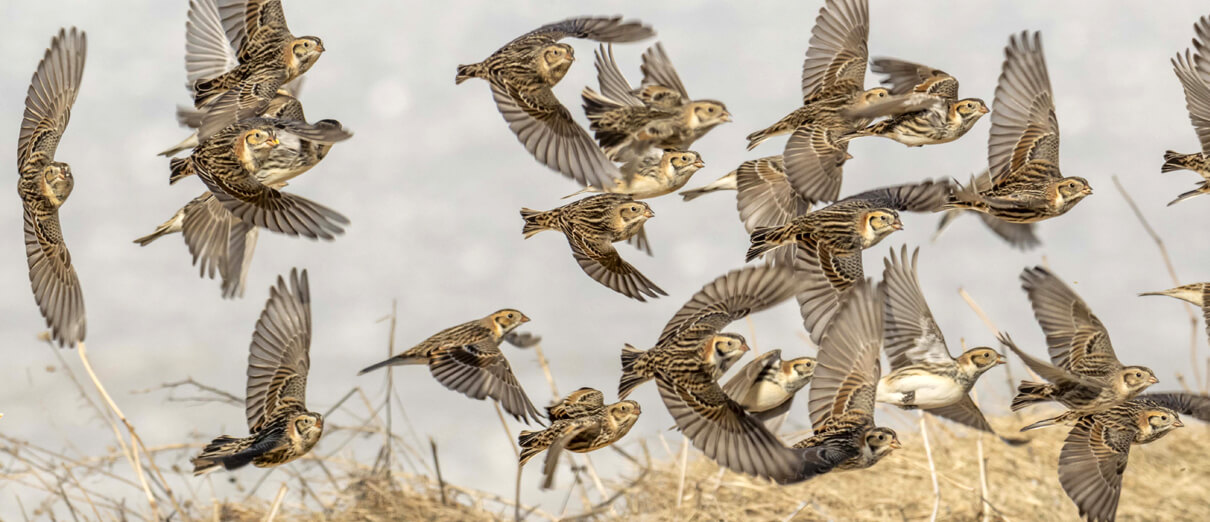
The female longspur builds a cup-shaped nest of grasses and moss, lined with feathers and hair, in a well-hidden hollow on the ground. She lays 4-6 eggs, which she incubates for almost two weeks. Both parents feed the nestlings, which fledge in only 10 days — an adaptation to the short Arctic summer. Lapland Longspurs only raise one brood per season for the same reason.
Lapland Longspurs forage by walking along the ground, taking seeds, insects, and other invertebrates. During the winter, they are attracted to waste grain in agricultural areas, sometimes gathering in huge flocks numbering in the thousands.
Region and Range

The Lapland Longspur nests across Arctic regions around the world (known as a circumpolar breeding distribution). North American populations breed in northern Canada and Alaska; then migrate south to winter across the central and eastern U.S. in fields, prairies, and other open habitats. It's the only longspur species found wintering east of the Appalachian Mountains.
Although agricultural fields have replaced native prairie in its core wintering area in the Great Plains, the Lapland Longspur still can be found there in large flocks each winter. It is considered to be one of the most abundant land birds that winters in North America.
Five subspecies of Lapland Longspur are recognized, varying in plumage color, bill size, and wing length. Three of these subspecies occur in North America, although one only as an occasional visitor.
Conservation
Although the Lapland Longspur remains abundant, climate change is starting to impact its tundra breeding habitat and may eventually cause widespread loss of suitable nesting areas.

Help support ABC's conservation mission!
Pesticide use is another threat, as application often coincides with the Lapland Longspur's spring migration. A class of pesticides known as neonicotinoids is a particular concern for this bird and other species that frequent agricultural areas, including the Grasshopper Sparrow, Upland Sandpiper, and Western Meadowlark.
Migrating flocks of Lapland Longspurs sometimes collide with lighted structures such as communications towers, causing thousands of deaths in a single night.
ABC provides a number of resources to help reduce communication tower collisions and fatalities. Our Pesticides program works to block or restrict dangerous pesticides and advocates for regulatory decisions grounded in science and ongoing monitoring.
Get Involved
Policies enacted by the U.S. Congress and federal agencies, such as the U.S. Fish and Wildlife Service, have a huge impact on migratory birds. You can help shape these rules for the better by telling lawmakers to prioritize birds, bird habitat, and bird-friendly measures. To get started, visit ABC's Action Center.
Living a bird-friendly life can have an immediate impact on migratory birds in the United States. Doing so can be as easy as adding native plants to your garden, avoiding pesticides, and keeping cats indoors. To learn more, visit our Bird-Friendly Life page.
American Bird Conservancy and our Migratory Bird Joint Venture partners have improved conservation management on more than 8.5 million acres of U.S. bird habitat — an area larger than the state of Maryland — over the last ten years. That's not all: With the help of international partners, we've established a network of more than 100 areas of priority bird habitat across the Americas, helping to ensure that birds' needs are met during all stages of their lifecycles. These are monumental undertakings, requiring the support of many, and you can help by making a gift today.






































